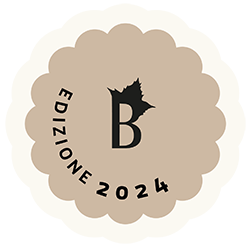A popular legend tells the story of an ancient village entitled to a nuragic chieftain which became Onanie, Sardinian name of the town of Onani.
Archaeological finds attest to the fact that the origins of the town date back to the nuragic age documented also by the numerous monuments scattered throughout the district: from the classic towers, the tombs of the giants, up to the sacred well of Muros d’Avria. The territory however has a story even more ancient, as demonstrated by the presence of the burials excavated in the rock called “domus de janas” , ‘fairy houses’, dating back to at least the 3rd millennium BC.
Scarce traces of the Roman Age while under the influence of the Byzantine are attested to the cults of Sant’Elena, of Saints Cosma and Damiano, and the churches dedicated to them.
Dense with fortunes was the medieval age : the village had originally belonged to the “curatoria” of Bitti and the Giudicato di Gallura but with the disappearance of the Visconti dynasty and the war against Pisa, which harbor dismemberment of the judged, it was annexed in the XIV century that of Arborea.
Passed into the hands of the invaders Aragonese rule in 1335, it became part of the fief of Giovanni d'Arborea brother traitor of Judge Mariano IV. Giovanni was then captured and imprisoned by his brother and the fate of the village followed step-by-step the fate of the war between l’Arborea and the Catalan and Aragonese. In 1410, when the fate of the conflict was now marked in favor of the conquerors, Onani became part of the fief of Nicolo Turrigiti.
Only twenty years after his heirs sold it to the Marquisate of Oristano so that even the village became part of the contention between the crown of Aragon and the marquis Leonardo Alagon which had attempted to turn back the torch of the rebellion against the Iberian domination. With the defeat of Alagón the village stepped into the hands of the Carroz and after into the hands of the other feudal lords including the De Silva that in 1617 made it part of the great marquisate of Orani.
In the XVIII century, Sardinia passed under the Savoy domination but, as with most Sardinians towns, Onani had to wait for 1839 to be able to free permanently from feudal yoke.
The current parish church was built in 1866 and dedicated to the Sacred Heart of Jesus. At the end of the Nineteenth Century the local council ceded the fraction of Mamone to the state who built a penal colony still in use. The current official name of the country changed in the middle of the XIX century because of a wrong transcription of Piedmont cartographers.
From 1984 to 1990 the municipal government has commissioned the painter Diego Asproni the beautiful murals that adorn the main roads with glimpses of past life, events of the history of the town and religious themes.
A rich variety of landscapes characterizes the territory of Onani where visitors can gaze upon views that are different each time and always charming.
The green hills are covered with beautiful woods of oak surrounded by the essences of the Mediterranean shrub. This is the habitat of different species of local fauna: wild boars, hares, partridges etc.
The ridges meet extended areas reserved for the wild grazing large livestock, consisting predominantly of sheep, which represents the main source of income for the population. This important activity has left a legacy sos ‘cuiles’, i.e. the traditional shelters of the pastors today still used by those who seek adventure on the suggestive paths of the transhumance outside passageways leading mainly to the Riu Mannu, to reach the plain of Galle or continue toward the Gallura.
These paths lead to the discovery of environmental beauties. There’s an extraordinary forest of centuries-old holm-oaks in the locality S’ Adde de s’achina.
A beautiful natural landscape is represented by the valleys formed by the main watercourses: Riu Mannu, Riu Masicare, and Riu Laerru marked by the luxuriant vegetation of the typical river ecosystems.
On the north-west is the granite highland Mamone, nesting the beautiful queen of the skies: the Golden Eagle.
A walk in the countryside around the village offers a chance to take a dip in the history of discovery of the luxurious regional churches and archaeological sites. These are places of great beauty, such as the church of Santu Pretu, built in the XI century with granite ashlars and a rare covering with sheets of schist, alongside the homonymous nuraghe, evidence of the ancient Sardinian civilization which has moved here since the Bronze Age.
Antiquity and modernity coexist in a town that originates in prehistory and has been able to look to the future by betting on art and culture.
The domus de janas, excavated in the rock in Cogoli, are important witnesses of the peoples that lived in this area since the Neolithic period. In the town of Onanì there are many archaeological sites: a sacred well in Muros D'Avria, tombs of giants (in San Bachisio, Rectory Tanca, Ozziddai and Comunale de Josso) and the extraordinary towers including those best preserved are: Nuraghe Santu Pretu, Nuraghe Salamizzi, Nuraghe Liri, Nuraghe Liuguri.
Among them the most well-known are Nuraghe Liuguri and Nuraghe Santu Pretu, built on a small hill near the city centre, next to which, in the second half of the 11th century, the enchanting church of St. Peter the Apostle was built.
This small masterpiece, made of granite tiles, has a spectacular shingle slab covering. A sailboat overhangs the facade characterized by a portal with a bow and a cross-opening opening repeating on the apse.
The old town preserved the typical houses of traditional architecture, divided between palatzu, the living room with the heart in the center, which served as a kitchen and a bedroom, and s'unnacru, the warehouse where the supplies were kept. An integral part of the houses were “sas cortes”, the typical courtyards where pigs and hens were raised.
The streets of the country are beautified by the precious murals painted by the artist Diego Asproni between 1984 and 1990, to which were added some of the students of the Brera Academy.
The proposed subjects range from stories of everyday life to historical events and representations of ethnic and religious values.: for example, The Nativity and The Crucifixion of Christ, which are illustrated on the walls of the streets that leading to the Church of Sacro Cuore. This church was built in 1866, in place of Santa Maria’s Church, built in the 14th century. In the portal of the Church of Sacro Cuore are nestled the wonderful bronze forms created by the artist Pinuccio Sciola.
In the surrounding area there are also the churches dedicated to St. Bachisio, St. Francis, St. Helena and the Saints Cosma and Damiano. The last two refer to the cults of Eastern origin that witness the frequentation of this area in the Byzantine era.



